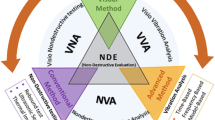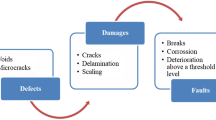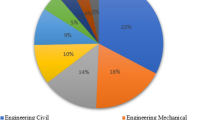Abstract
Structural health monitoring (SHM) is a relatively new paradigm for civil infrastructure stakeholders including operators, consultants and contractors which has in the last two decades witnessed an acceleration of academic and applied research in related areas such as sensing technology, system identification, data mining and condition assessment. SHM has a wide range of applications including, but not limited to, diagnostic and prognostic capabilities. However, when it comes to practical applications, stakeholders usually need answers to basic and pragmatic questions about in-service performance, maintenance and management of a structure which the technological advances are slow to address. Typical among the mismatch of expectation and capability is the topic of vibration-based monitoring (VBM), which is a subset of SHM. On the one hand there is abundant reporting of exercises using vibration data to locate damage in highly controlled laboratory conditions or in numerical simulations, while the real test of a reliable and cost effective technology is operation on a commercial basis. Such commercial applications are hard to identify, with the vast majority of implementations dealing with data collection and checking against parameter limits. In addition there persists an unhelpful association between VBM and ‘damage detection’ among some civil infrastructure stakeholders in UK and North America, due to unsuccessful transfer of technology from the laboratory to the field, and this has resulted in unhealthy industry scepticism which hinders acceptance of successful technologies. Hence the purpose of this paper is showcase successful VBM applications and to make the case that VBM does provide valuable information in real world applications when used appropriately and without unrealistic expectations.

Similar content being viewed by others
References
Adams RD, Cawley P, Pye CJ, Stone BJ (1978) A vibration technique for non-destructively assessing the integrity of structures. J Mech Eng Sci 20(2)
Aktan AE, Yao JTP (1996) On structural identification of constructed facilities. In: ASCE structures congress. building an international community of structural engineers, Chicago, Illinois, pp 651–658
Alvandi A, Cremona C (2006) Assessment of vibration-based damage identification techniques. J Sound Vib 292(1–2):179–202
Andersen JE, Fustinoni M (2006) Structural health monitoring systems. COWI-Futurtec, Lyngby
Au SK (2011) Fast Bayesian FFT method for ambient modal identification with separated modes. ASCE J Eng Mech 137(3):214–226
Barr IG, Waldron P, Evans HR (1987) Instrumentation of glued segmental box girder bridges. In: Monitoring of large structures and assessment of their safety. IABSE Colloquium, Bergamo
Bernal D, Beck J (2004) Preface to the special issue on phase I of the IASC-ASCE structural health monitoring benchmark. J Eng Mech ASCE 130(1):1–2
Bouwkamp JG, Rea D (1970) Dynamic testing and the formulation of mathematical models. In: Wiegel RL (ed) Earthquake engineering. Prentice-Hall, New York
Brederode P, de WP, Van SP, Segers W (1986) Dynamic offshore structure test (DOST) project—a new approach to quality assessment of offshore structures. In: IRM/AODC 86 Inspection Repair Maintenance, Aberdeeon
Brownjohn JMW, Bocciolone M, Curami A, Falco M, Zasso A (1994) Humber bridge full-scale measurements campaigns 1990–1991. J Wind Eng Ind Aerodyn 52:185–218
Brownjohn JMW, Carden EP, Goddard RC, Oudin C (2010) Real-time performance monitoring of tuned mass damper system for a 183 m reinforced concrete chimney. Wind Eng Ind Aerodyn 98:169–179
Brownjohn JMW, Carden P (2008) Real-time operation modal analysis of Tamar Bridge. In: IMAC XXVI
Brownjohn JMW, Moyo P (2001) Monitoring of Malaysia-Singapore second link during construction. In: Second international conference on experimental mechanics, pp 528–533
Brownjohn JMW, Moyo P, Omenzetter P, Lu Y (2003) Assessment of highway bridge upgrading by dynamic testing and finite-element model updating. J Bridge Eng 8(3):162–172
Brownjohn JMW, Pan TC (2001) Response of tall buildings to weak long distance earthquakes. Earthq Eng Struct Dyn 30(5):709–729
Brownjohn JMW, Pan T-C (2008) Identifying loading and response mechanisms from ten years of performance monitoring of a tall building. ASCE J Perform Constr Facil 22(1):25–34
Carden EP, Fanning P (2004) Vibration based condition monitoring: a review. Struct Health Monit 3(4):355–377
Carder DS (1936) Observed vibration of buildings. Bull Seismol Soc Am 26(3):245–277
Carder DS (1936) Observed vibrations of steel water towers. Bull Seismol Soc Am 26(1):69–98
Carder DS (1937) Observed vibrations of bridges. Bull Seismol Soc Am 27:267
Casas JR (1994) A combined method for measuring cable forces: the cable-stayed Alamillo Bridge, Spain. pp 235–240
Casas JR (1997) Horizontal bridge soil-structure interaction assessment by dynamic testing. Exp Mech 37(1):73–81
Casas JR, Aparicio AC (1998) Monitoring of the Alamillo cable-stayed bridge during construction. Exp Mech 38(1):24–28
Casas JR, Aparicio AC (2010) Rain-wind induced vibrations in the Alamillo cable-stayed bridge (Sevilla, Spain). Assessment and remedial action. Struct Infrastruct Eng 6(5):549–556
Catbas FN, Aktan AE (2002) Condition and damage assessment: issues and some promising indices. J Struct Eng ASCE 128(8):1026–1036
Catbas FN, Brown DL, Aktan AE (2006) Use of modal flexibility for damage detection and condition assessment: case studies and demonstrations on large structures. ASCE J Struct Eng 132(11):1699–1712
Catbas FN, Gul M, Burkett JL (2008) Damage assessment using flexibility and flexibility-based curvature for structural health monitoring. Smart Mater Struct 17(1)
Catbas FN, Kijewski-Correa T, Aktan AE (2011) Structural identification (ST-Id) of constructed facilities. American Society of Civil Engineers (ASCE) Structural Engineering Institute (SEI)
Cawley P, Adams RD (1979) The location of defects in structures from measurements of natural frequencies. J Strain Anal Eng Des 14 (2)
Cherry S, Topf UA (1970) Determination of dynamic properties of a tower structure from ambient vibrations. In: 3rd European Symposium on Earthquake Engineering, Sofia
CIGB ICOLD (1988) Dam monitoring general considerations. International Commission on Large Dams, Bulletin 60, Paris
Collins JD, Hart GC, Hasselman TK, Kennedy B (1974) Statistical identification of structures. AIAA 12(2):185–190
Coppolino RN, Rubin S (1980) Detectability of structural failure in offshore platforms by ambient vibration monitoring. In: Proceedings of offshore technology conference 12, vol 4, Houston
Cross EJ, Koo K, Brownjohn JMW, Worden K (2010) Long-term monitoring and data analysis of the Tamar Bridge. In: ISMA2010-USD2010, Leuven
Dallard P, Fitzpatrick AJ, Flint A, le Bourva S, Low A, Ridsdill Smith R, Willford M (2001) The London millennium footbridge. Struct Eng 79(22):17–33
De Roeck G (2003) The state-of-the-art of damage detection by vibration monitoring: the SIMCES experience. J Struct Control 10:127–134
De Stefano A, Enrione D, Ruocci G (2008) Innovative techniques for structural assessment: the case of the Holy Shroud Chapel in Turin. In: 6th international conference on structural analysis in historic construction (SAHC08), Bath
Deraemaeker A, Reynders E, De Roeck G, Kullaa J (2008) Vibration-based structural health monitoring using output-only measurements under changing environment. Mech Syst Signal Process 22(1):34–56
Doebling SW, Farrar CR, Prime MB (1998) A summary review of vibration-based damage identification methods. Shock Vib Dig 30(2):91–105
Doebling SW, Farrar CR, Prime MB, Shevitz DW (1996) Damage identification and health monitoring of structural and mechanical systems from changes in their vibration characteristics: a literature review. Los Alamos, National Laboratory, LA-13070-MS
Foti S, Sabia D (2006) Dynamic behaviour of bridges affected by scouring: numerical simulations and experimental evidence. In: 3rd international conference on scour and erosion, Amsterdam
Frandsen JB (2001) Simultaneous pressure and accelerations measured full-scale on the Great Belt East suspension bridge. J Wind Eng Ind Aerodyn 89(1):95–129
Friswell MI, Mottershead JE (1995) Finite element model updating in structural dynamics. Kluwer, Dordrecht
Grimmelsman KA, Aktan AE (2005) Impacts and mitigation of uncertainty for improving the reliability of field measurements. In: 2nd international conference on structural health monitoring of intelligent infrastructure, Shenzhen, pp 1139–1149
Grimmelsman KA, Pan Q, Aktan AE (2007) Analysis of data quality from ambient vibration testing of the Henry Hudson Bridge, pp 765–775
Hart GC, Yao JTP (1976) System identification in structural dynamics. In: ASCE/EMD specialty conference, dynamic response of structures: testing methods and system identification, pp 61–85
Heywood R, Roberts W, Boully G (2001) Dynamic loading of bridges. Transp Res Rec 1770:58–66
Housner GW, Bergman LA, Caughey TK, Chassiakos AG, Claus RO, Masri SF, Skelton RE, Soong TT, Spence BF, Yao JT (1997) Structural control: past, present and future. ASCE J Eng Mech 123(9):897–971
Hudson DE (1976) Dynamic tests of full-scale structures. In: ASCE/EMD specialty conference, dynamic response of structures: testing methods and system identification, Los Angeles, pp 1–39
Ibanez P (1979) Review of analytical and experimental techniques for improving structural dynamic problems. Welding Research Council, Report no. 249
Iwan WD (2003) Health and performance evaluation using real-time hysteretic behaviour. In: Structural health monitoring and intelligent infrastructure, SHMII-1, Tokyo, pp 1031–1038
Jaishi B, Kim HJ, Kim MK, Ren WX, Lee SH (2007) Finite element model updating of concrete-filled steel tubular arch bridge under operational condition using modal flexibility. Mech Syst Signal Process 21(6):2406–2426
Kenley RM, Dodds CJ (1980) West sole we platform: detection of damage by structural response measurements. In: Offshore technology conference 12
Kijewski-Correa T, Kilpatrick J, Kareem A, Kwon DK, Bashor B, Kochly M, Young BS, Abdelrazaq A, Galsworth JK, Isyumov N, Morrish D, Sinn RC, Baker WF (2006) Validating wind-induced response of tall buildings: synopsis of the Chicago full-scale monitoring program. ASCE J Struct Eng 132(10):1509–1523
Ko JM, Ni YQ (2005) Upgrade of a structural health monitoring system for the suspension Jiangyin Bridge. In: Korea Infrastructure Safety and Technology Corporation, Gyeongju, Korea
Kwon DK, Kijewski-Correa T, Kareem A (2010) SmartSync: an inegrated real-time monitoring and system identification platform for tall buildings. In: 5th World Conference on Structural Control and Monitoring, Tokyo, pp 1–10
Larsen A, Andersen JE (2007) Identification of the source, impact and damping of stay-cable vibrations. In: Experimental vibration analysis of civil engineering structures EVACES’07, Porto
Larsen A, Esdhal S, Andersen JE, Vejrum T (2000) Storebaelt suspension bridge—vortex shedding excitation and mitigation by guide vanes. J Wind Eng Ind Aerodyn 88(2–3):283–296
Le Diourion T, Hovhanessian G (2005) The health monitoring of Rion Antirion Bridge. In: IMACXXIII, Orlando
Lilley DM, Adams RD, Larnach WJ (1982) Location of defects within embedded model piles using a resonant vibration technique. In: 10th world conference on nondestructive testing, Moscow
Lo W, Shih C, Hinote G (2001) Ground vibration test of a commercial aircraft. In: IMACXIX, Orlando, FL
Macdonald JHG (2002) Separation of the contributions of aerodynamic and structural damping in vibrations of inclined cables. J Wind Eng Ind Aerodyn 90:19–39
Macdonald JHG (2008) Pedestrian-induced vibrations of the Clifton Suspension Bridge. Proceeding of the Institution of Civil Engineers. Struct Build 161(2):69–77
Macdonald JHG, Irwin PA, Fletcher MS (2002) Vortex-induced vibrations of the Second Severn Crossing cable—stayed bridge -full-scale and wind tunnel measurements. ICE Proc Struct Build 152(2):123–134
Maeck J, Peeters B, De Roeck G (2001) Damage identification on the Z24 bridge using vibration monitoring. Smart Mater Struct 10:512–517
Magalhaes F, Cunha A, Caetano E (2008) Dynamic monitoring of a long span arch bridge. Eng Struct 30:3034–3044
Magalhaes F, Cunha A, Caetano E (2009) Online automatic identification of the modal parameters of a long span arch bridge. Mech Syst Signal Process 23(2):316–329
Manson G, Worden K, Allman D (2003) Experimental validation of a structural health monitoring methodology Part III. Damage location on an aircraft wing. J Sound Vib 259(2):365–385
Masri SF, Sheng LH, Caffrey JP, Nigbor RL, Wahbeh M, Abdel-Ghaffar AM (2004) Application of a web-enabled real-time structural health monitoring system for civil infrastructure systems. Smart Mater Struct 13(6):1269–1283
Matta E, De Stefano A, Quatteone A (2009) Reliability issues in vibration-based system identification: lessons from the JETPACS case study. In: 4th International Conference on Structural Health Monitoring on Intelligent Infrastructure (SHMII-4), pp 1–8
Moutinho C, Hu WH, Caetano E, Cunha A (2008) Implementation of a dynamic monitoring system at Coimbra Ootbridge. In: 26th international modal analysis conference (IMAC XXVI), Orlando, Florida, pp 1–10
Moyo P (2007) Structural assessment and performance prediction of a railway bridge. In: Experimental vibration analysis for civil engineering structures, Porto, pp 1321–1330
Moyo P, Brownjohn JMW, Omenzetter P (2004) Highway bridge live loading assessment and load carrying capacity estimation using a health monitoring system. Struct Eng Mech 18(5):609–626
Moyo P, Sibanda B, Ronne P (2009) Assessment of the effectiveness of retrofitting actions to a reinforced concrete bridge using full-scale vibration testing. In: 27th international modal analysis conference (IMACXXVII), Orlando, pp 1–7
Naeim F, Hagie S, Alimoradi A, Miranda E (2005) Automated post-earthquake damage assessment and safety evaluation of instrumented buildings. John A Martin & Associates Inc., JAMA Report Number: 2005-10639
Ni YQ, Xi Y, Chen WH, Lu WY, Ko JM (2009) Monitoring of wind properties and dynamic responses of a supertall structure during typhoon winds. In: 4th international conference on structural health monitoring of intelligent infrastructure (SHMII-4), Zurich, pp 1–8
Peeters B, Maeck J, Roeck GD (2001) Vibration-based damage detection in civil engineering: excitation sources and temperature effects. Smart Mater Struct 10:518–527
Radulescu DC, Radalescu C, Sereci AM (2003) Structural health monitoring 24/7 broadcasting system. In: Structural health monitoring and intelligent infrastructure, SHMII-1, Tokyo, pp 971–976
Reynders E, Pintelon R, De Roeck G (2008) Uncertainty bounds on modal parameters obtained from stochastic subspace identification. Mech Syst Signal Process 22(4):948–969
Rohrmann RG, Baessler M, Said S, Schmid W, Ruecker WF (2000) Structural causes of temperature affected modal data of civil structures obtained by long time monitoring. In: Proceedings of IMAC XVIII (18): a conference on structural dynamics, pp 1–7
Rouse GC, Bouwkamp JG (1967) Vibration studies of Monticello dam. USBR Water Resources, Technical Publication Research Report no. 9
Ruocci G, Ceravolo R, De Stefano A (2009) Modal identification of an experimental model masonry arch bridge. Key Eng Mater 413–444:707–714
Ruocci G, Worden K, De Stefano A (2010) Damage detection in a masonry arch bridge model using outlier analysis. In: 5th European Conference on structural health monitoring, Sorrento, Italy
Rytter A (1993) Vibration based inspection of civil engineering structures. PhD Dept. of Building Technology, Aalborg University, Denmark
Shahrivar F, Bouwkamp JG (1980) Damage detection in offshore platforms using vibration information. In: Proceedings of 3rd offshore mechanics and arctic engineering symposium, vol 2 (ASME), New Orleans
Siringoringo DM, Fujino Y (2008) System identification of suspension bridge from ambient vibration response. Eng Struct 30:462–477
Smethurst JA, Powrie W (2007) Monitoring and analysis of the bending behaviour of discrete piles used to stabilise a railway embankment. Geotechnique 57(8):663–677
Sohn H, Farrar CR, Hemez FM, Shunk DD, Stinemates DW, Nadler BR (2003) A review of structural health monitoring literature: 1996–2001. Los Alamos National Laboratory, LA-13976-MS
Spidsoe N, Berg S, Hoen C, Beck G (1980) Measured behaviour of platforms on the Norwegian continental shelf. In: European offshore petroleum conference and exhibition, London
Tezcan SS, Ipek M, Petrovski J, Paskalov T (1975) Forced vibration survey of Istanbul Bogazici bridge. In: 5th European conference on earthquake engineering, Istanbul
Trifunac MD, Ivanovic SS, Todorovska MI (2003) Wave propagation in a seven-storey reinforced concrete building: III damage detection via changes in wave numbers. Soil Dyn Earthq Eng 23:65–75
Veit-Egerer R, Wenzel H, Dreitler V (2009a) Monitoring based traffic loading model for steel bridges with fatigue threat—discussion and comparison to Eurocode 1–2. In: Experimental vibration analysis for civil engineering structures, EVACES’09, Wroclaw, Poland
Veit-Egerer R, Widmann M, Wenzel H (2009b) Evaluation of input energy dependence on the key performance indicators extracted from ambient vibration measurements with regard to structural assessment
Wenzel H, Veit-Egerer R (2007) Assessment of existing structures and models. LESSLOSS risk mitigation for earthquakes and landslides—IP: subproject 5: In-situ assessment, monitoring and typification; Deliverable D20
Wenzel H, Veit-Egerer R (2010) Determination of a performance baseline for lifecycle consideration of bridges. In: Bridge maintenance, safety, management and life-cycle optimization: IABMAS10, Philadelphia, pp 1282–1286
Wenzel H, Veit-Egerer R, Widmann M, Jaornik P (2009) WP3 Demonstration Project. VCE, IRIS Integrated European Industrial Risk Reduction system—IP: SP3 and 7 workers safety and online monitoring. Deliverable D11-1, Vienna, Austria
Wong KY (2004) Instrumentation and health monitoring of cable-supported bridges. Struct Control Health Monit 11(2):91–124
Wong KY (2007) Design of a structural health monitoring system for long span bridges. Struct Infrastruct Eng 3(2):169–185
Wong KY (2010) Structural health monitoring and safety evaluation of Stonecutters Bridge under the in-service condition. In: Bridge maintenance, safety, management and life-cycle optimization: IABMAS10, Philadelphia, pp 2641–2648
Xia Y, Hao H, Brownjohn JMW, Pin-Qi X (2002) Damage identification of structures with uncertain frequency and mode shape data. Earthq Eng Struct Dyn 31(5):1053–1066
Xu YL, Zhan S (2001) Field measurements of Di Wang tower during typhoon York. J Wind Eng Ind Aerodyn 89(1):73–93
Yu E, Skolnik D, Whang DH, Wallace JW (2008) Forced vibration testing of a four-story reinforced concrete building utilizing the nees@UCLA mobile field laboratory. Earthq Spect 24(4):969–995
Zhou HF, Ni YQ, Ko JM (2008) A data processing and analysis system for the instrumented suspension Jiangyin bridge. In: Proceedings of the word forum on smart materials and smart structures technology, Chonqing and Nanjing, China
Zimmerman DC (2000) Model validation and verification of large and complex space structures. Inverse Probl Eng 8(2):93–118
Acknowledgments
Case studies and comments have been provided by the authors as well as Joan Casas, Pilate Moyo, John Macdonald, YiQing Ni, Jacob Andersen, HuaFei Zhou, Alvaro Cunha and several other academics who have been referenced in the text.
Author information
Authors and Affiliations
Corresponding author
Rights and permissions
About this article
Cite this article
Brownjohn, J.M.W., De Stefano, A., Xu, YL. et al. Vibration-based monitoring of civil infrastructure: challenges and successes. J Civil Struct Health Monit 1, 79–95 (2011). https://doi.org/10.1007/s13349-011-0009-5
Received:
Accepted:
Published:
Issue Date:
DOI: https://doi.org/10.1007/s13349-011-0009-5




